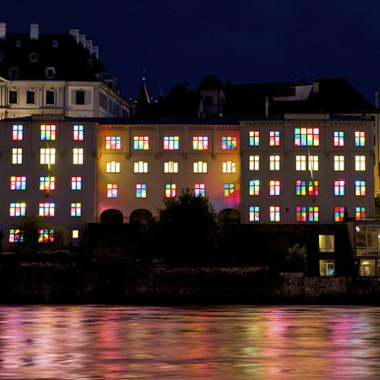Interview: Tricia MacKenzie of Inter Space Lab
Mapping neural patterns of artists to open doors toward better treatment for psychiatric disorders

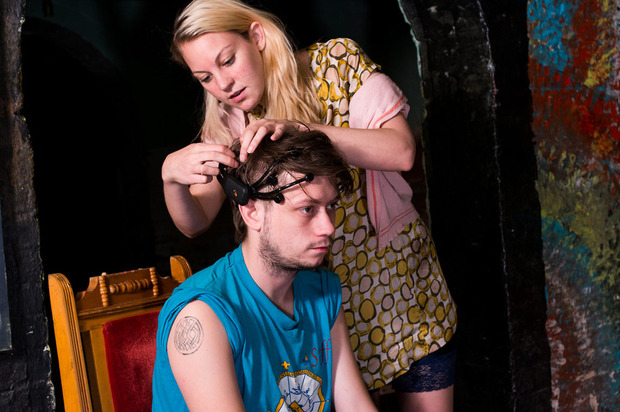
Our contemporary creative world is peppered with scientific and technological influences—exhibitions that feature stylized data mapping, molecular gastronomy, Maker Faire‘s everlasting dedication to the nerdy artist—it’s truly a tradition that traces at least as far back as da Vinci. But how often do the tables turn and allow creativity to influence scientific inquiry? According to NYC-based radical neuroscientist Tricia MacKenzie, PhD, the answer to that question is definitely not enough.
Working out of Inter Space, her independently run lab and gallery, MacKenzie is using her expertise to find new ways to better understand the neurological basis of creativity. MacKenzie started this current investigation in collaboration with Brooklyn-based artist Dean Cercone, by recording his neural activity while he created numerous pieces of work. This, she hopes, will allow her to track exactly where creative practice manifests in the brain—thus opening doors toward better treatment for certain psychiatric disorders. By collaborating with artists, MacKenzie’s research defies the concept that science and art are divided paths of study—in doing so, she seeks to obliterate the institutional limitations currently set upon the scientific community at large. MacKenzie opened the doors to her lab to the public on 17 October, exhibiting the resulting pieces Cercone made while acting as MacKenzie’s first test subject. The exhibit, titled “illuminated dissolved humanity cortex manifestations,” will run through 30 November 2014.

Tell us about the process of the experiment. What are you trying to achieve with this research?
I am trying to understand the brain areas artists use when they are creating work. I am operating under the hypothesis that art is an example of heterozygous advantage, meaning that the same processes that allow artists to create beautiful works also puts them at genetic risk for themselves or their children developing a neuropsychiatric disorder. Many artists decline traditional treatments for potentially lethal neuropsychiatric disorders because drugs interfere with their creative process. I am starting by recording brain activity in artists, in this case Dean Cercone, while they are creating work using an Emotiv EEG (electroencephalography) device. I would like to understand how artists make art so that we can develop treatments that truly help them.
What have you learned so far?
I only have one test subject, so it is difficult to make any firm conclusions. However, I learned that gamma oscillatory activity in prefrontal cortex and an absence of cortical activity in the occipital lobe (visual area) is an important part of Dean Cercone’s creative process.
Why did you choose Dean Cercone as a test subject for this particular project?
While Dean Cercone is approaching his work from a very different direction, we are very similar artists dealing with the same concepts and obsessions. Dean also has a natural talent for biology and while he was technically my test subject, our work together was more of a collaboration and I feel very privileged to have been able to work with him on this project. I also of course absolutely love his paintings and think he is one of the most talented young artists in New York.
Are you working with other artists as well?
I love working with the artistic community and I will be working with many, many artist-test subjects this year in the space. In addition to working with test subjects, I am working on translating the data I am collecting into data-based art pieces. Hopefully Dean Cercone will continue to pioneer new techniques and research directions with me.
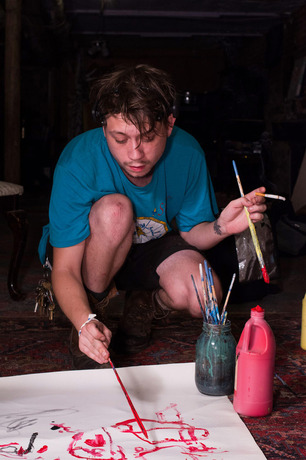
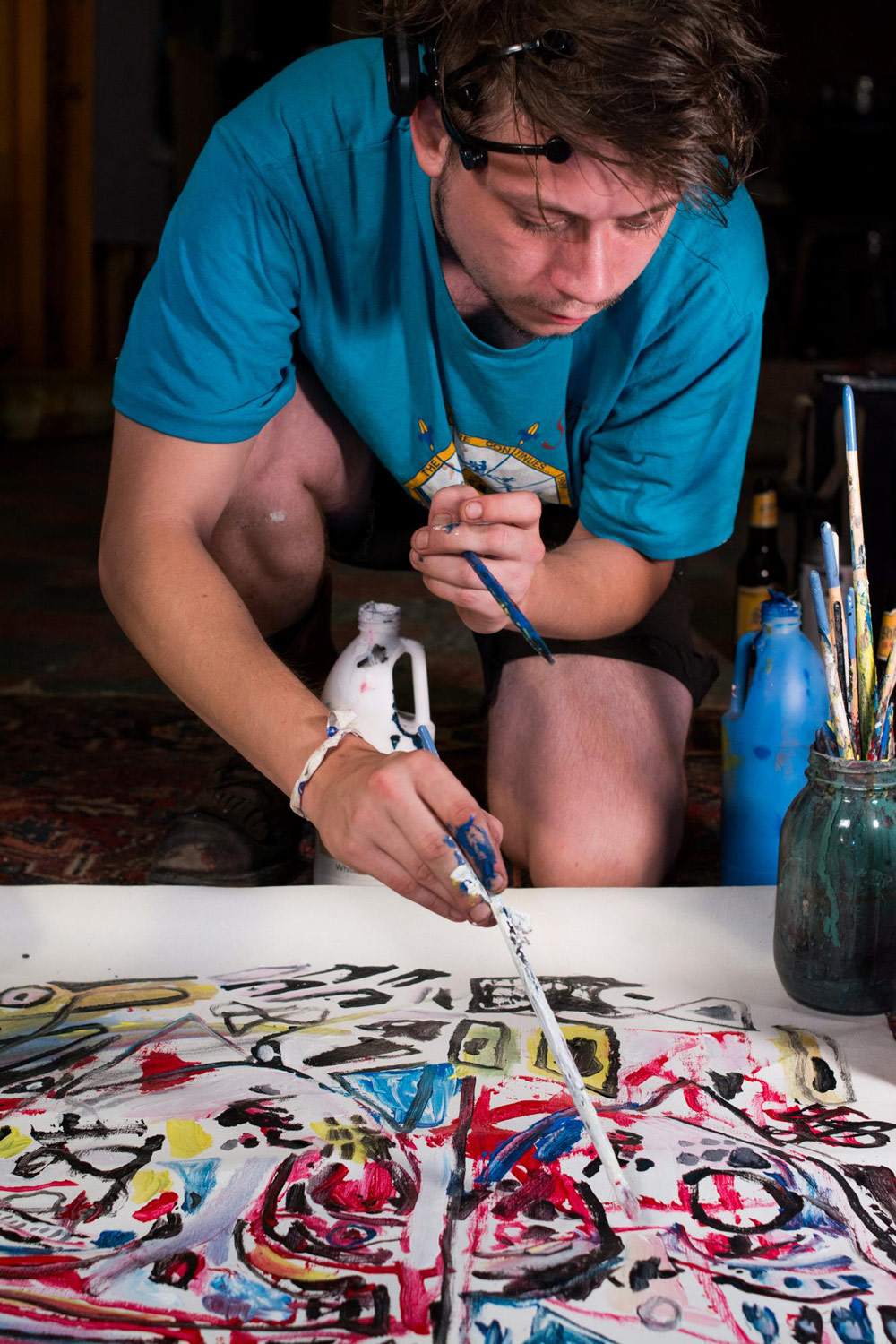
You completely entrench your research within a creative atmosphere, as indicated by the fact that your lab is now also acting as a gallery. Why did you choose this approach?
It is acutely important for the future of humanity and our planet that cultural influencers and scientists work together. In the same way artists ultimately often have to make a living working for the advertising companies that perpetuate the dominance of the corporations that are polluting our planet, biologists work primarily for an accolade-based system defined by our government and the pharmaceutical industry. I would like to provide a space where scientists and artists can learn how to work closely together so that we can create a sustainable environment for all beings. I feel that studying creativity and influence is a good starting point for bringing artists into the lab and scientists into active spaces.
You say you’re the “Resident Scientist” at DIY collective Silent Barn. What exactly does that mean?
I believe that scientists should explore innovative and creative projects in the same way that artists and musicians do. Silent Barn provided me with the space to develop my project outside of the restrictions of a traditional academic institution. I am extremely grateful for the opportunity to exist alongside such amazing people. I consider the friends I made at Silent Barn to be lifelong.
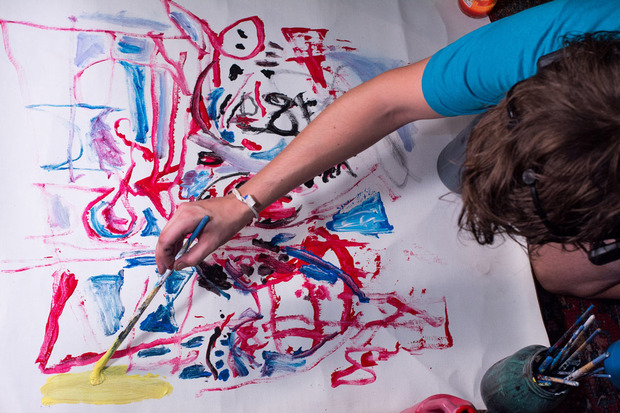
Where do you want to go next with your research?
For the next show, I am moving onto recording brain activity in conjunction with a technique—which I made this past year as part of my residency at the Silent Barn—that allows me to track how visual influence is translated into art in a quantitative way. If I receive enough funding, I will be able to sequence the genomes of artists and start looking for specific gene variants that are present in creative people that may also be risk factors for various disorders.
I would of course like to repeat the experiments I performed on Dean on many test subjects and start sequencing artists so that I can find gene variants associated with creativity. I envision a future where this project is not just about my research; I would like to see many, many young people taking advantage of cheaper technologies and starting their own independent labs. The average scientist does not start their own research lab until their mid to late 30s, if at all, and I think our planet cannot wait this long.
illuminated dissolved humanity cortex manifestations runs 16 October—30 November at Inter Space (137 W 14th St, NYC).
Images courtesy of Winston Struye


